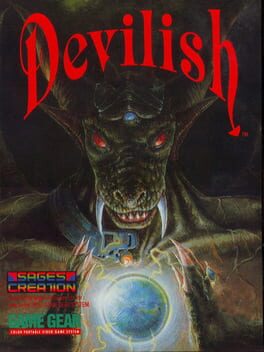

A prince and princess were in love with each other until a jealous demon turned the happy couple into a set of stone paddles; resembling that of the pinball kind.Suddenly, a ball came into existence that could use the prince and princess in order to defeat the demons that now rule over the kingdom. Players have to use two paddles; the upper one is used to defeat demons while the lower one helps to prevent the player from dropping to its demise at the bottom of the board. By defeating bad guys and smashing through breakable blocks, the player advances towards the boss of each level. Resembling a harder version of Arkanoid, the vertically scrolling screen forces the ball to move constantly forward in an attempt to reach the boss. Only the Sega Mega Drive version has a two-player option. Players can choose between three difficulty levels in the Game Gear version and can also select an option to do a time trial.
Reviews View More
MB: "It's probably just a devil"
Lord Darias: "Yeah, nobody can top Satan"
Both of us:
Devilish: The Next Possession on Genesis is one of those '''obscure underrated classics''' games with crazy music and a wacky gameplay setup that's actually pretty bad. It's a time trial breakout where you use two paddles with flippable axes and arrangements to guide a ball to a goal while racing the clock. While the concept is cool, the Genesis game's physics are extremely difficult to work around and make the whole process of winning feel like a stroke of luck.
I only learned recently (read: today) that the Devilish on MD most people are familiar with is actually a remake to a Game Gear title of the same name, and that version's surprisingly a lot better. Why?
The physics work this time. That's it, really.
The ball still has a weirdly-absent sense of force feedback, but there's no framerate issues to complicate movement and the ball's generally easier to manipulate, enough to make it a fun time. Levels have fewer environmental or thematic gimmicks, making them easier to 'swim' through. When your ball manages to cover two screens worth of area through ricochets and powerups, it feels like an earned reward for skillful planning instead of a pain-mitigating accident. Really wish the 16-bit version had the same gamefeel, because I sorely missed Sakimoto's MD arrangements of the soundtrack.
Some other issues from the later MD version that are still persistent here are rough boss design and an overly-strict timer. There were a lot of levels where I only shaved by with between 2-6 seconds - though I guess in hindsight, it was pretty exhilarating to experience.
